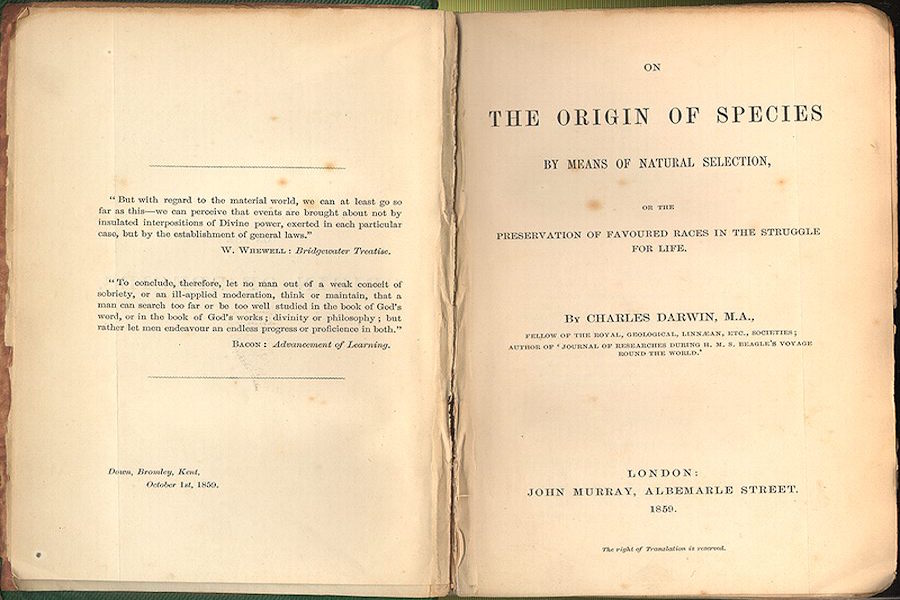
The father of evolutionary theory proves that science and the humanities jointly form a more detailed view of the world
Some of my favorite childhood memories involve sitting at the table with my mom, chipping away at a massive, complicated jigsaw puzzle with fewer notable and unique pieces than Buzzfeed (no small feat). But to my horror, my mom often insisted on solving the puzzle without constantly studying the picture on the box.
But, to be fair, her torturous method actually made fitting the correct pieces together all the more satisfying. As we slowly assembled our masterpieces, I’d grow increasingly eager to find the special piece that would reveal the picture’s subject and help arrange the remaining pieces. And even though my cat always turned our puzzles into hairball-splattered Jackson Pollock paintings, the pride of blindly piecing together an entire puzzle forgave any of my cat’s unsolicited contributions.
With his 1859 magnum opus, On the Origins of Species, Charles Darwin similarly pieced together fundamental scientific elements and constructed a more complete image of the world. Although he didn’t invent the concept of evolution, Darwin verified its existence by outlining its driving force: natural selection.
In environments rich in variation among organisms, natural selection operates to eliminate the species least suitable for their surroundings — an idea that spurred the creation of an entire branch of evolutionary biology and revolutionized many aspects of science.
Deemed the essential unifying theory for the life sciences, evolutionary theory has allowed scientists to understand the links between all species on Earth. Evolution also dismissed supernatural notions supported by natural theologians, instigating a culture shift toward stricter scientific and secular explanations of the natural world.
Darwin’s work has also served as a bridge between science and various fields of humanities. Like other physical sciences, certain principles of evolutionary biology require universal laws to be fully explained. Yet evolutionary biology mainly focuses on past events to uncover new information, rendering experiments and other standard scientific methods futile. Therefore, by pioneering evolutionary biology, Darwin married the two previously distinct fields of biology and history.
When mixed with psychology, evolution also provides significant insight into ethical questions about human nature. From a purely scientific viewpoint, evolution suggests that humans are intrinsically selfish due to their innate drive for self-preservation. But human beings, in reality, often express altruism and are willing to sacrifice their lives for loved ones or even complete strangers.
While this level of selflessness sounds irrational, psychology maintains that humans are social creatures who depend upon one another to survive, providing them with a strong incentive to sustain healthy relationships and preserve the lives of other group members. As a result, psychology and biology work together to provide a scientific basis for morality.
Our universe is intricately composed of a countless number of pieces, both near, like the endless amount of cells in the human body, and far, like the estimated billions of solar systems sailing through the cosmos.
As scientists, humanists and other scholars strive to understand their own fields of interest, they build a more comprehensive understanding of our universe piece by piece. Like Darwin’s discoveries demonstrate, all pieces — whether scientific, philosophical, mathematical or otherwise — are ultimately connected, collectively comprising the entire universe.
When a crucial piece, like the theory of evolution, is placed into the puzzle, our world instantly becomes clearer, making all other missing pieces slightly easier to locate. Future pivotal discoveries in both science and the humanities will further clarify the puzzling complexities of our universe, piecing together a picture that more accurately depicts the world in which we live.
We just need to keep my cat away.
Written by: Taryn DeOilers – opinion@theaggie.org



